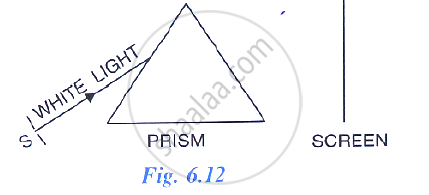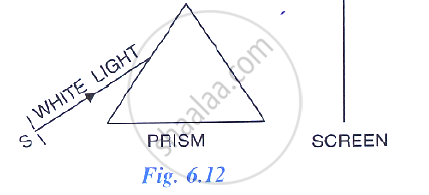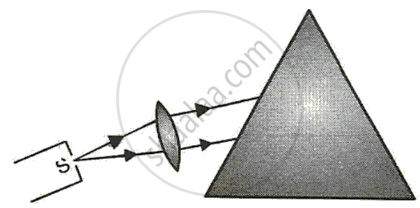Advertisements
Advertisements
प्रश्न
In following diagram shows a thin beam of white light from a source S striking on one face of a prism.

What conclusion do you draw from the observation in part (b) above?
उत्तर
From the observation, we conclude that prism itself produces no colour.
APPEARS IN
संबंधित प्रश्न
Name three factors on which the deviation produced by a prism depends and state how does it depend on the factors stated by you.
In following diagram shows a thin beam of white light from a source S striking on one face of a prism.

A slit is placed in between the prism and the screen to pass only the light of green colour. What will you then observe on the screen?
If a monochromatic beam of light undergoes minimum deviation through an equiangular prism, how does the beam pass through the prism, with respect to its base?
Write the approximate wavelengths for blue.
Draw another diagram to show how the colours of spectrum of white light can be combined to give the effect of white light.
Fig shows part of the arrangement for obtaining pure spectrum.
(a) Complete thediagram and show how to obtain a pure spectrum.
(b) What are the conditions necessary for obtaining a pure spectrum?

What is understood by the term dispersion of light? What is its cause?
Which colour of white light travels slowest, in glass?
Write the approximate wavelength for red light.
The wavelengths for the light of red and blue colours are nearly 7·8 × 10-7 m and 4·8 × 10-7 m respectively.
Which colour has greater speed in glass?
